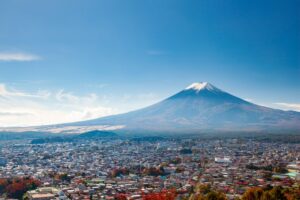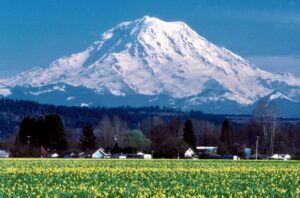Once, there was only one way.
Finding new rock to climb meant just that. Walking through the woods was the method. The task was to defy the guidebook of known climbs. To do this, you’d root around, following some rudimentary sense of geology or a hunch. Blind luck struck occasionally.
Despite a decade of this, I’d stop short of calling any of the off-grid boulders I’ve stumbled upon pearls of great price. And often, the legwork I’ve put into the hunt would justify results far more dazzling. Had I stopped to think, I might have landed on more refined methods — and maybe not even used them. (We’ll get to that later.)
Rare air
But the situation seemed urgent. What was I supposed to do, hang out in the parking lot boulders with the people who actually had lives? The idea of it was inappropriate, man. My deviant companions and I needed rare air, man — or at least air that was far enough away from anybody who looked like a cop for us to smoke weed in relative comfort.
Slowly, by merit of stumbling around undeveloped land in ever-widening circles, we began to find suitable hangouts.
Laughing and talking, we lurched about these “secret” places in varyingly chemical states of mirth. Eventually, we coaxed boulder problems from them. I’m not sure whether actual effort was involved most of the time, or if it was literally a coaxing process. The boulder just got so used to us being there that eventually, it let us climb it.
Whenever you name something, it’s no longer free. As soon as you do it, it’s like all mortals can suddenly home in on its signature.
So, obviously, cue the next act: The bombing out of the secret spots.
View this post on Instagram
New rock, but who cares?
From files of personal anecdote, in no particular order:
Bongwater was once a contortional curiosity in a tiny cave. Now it’s a quick solve if you know who to look for on YouTube. Super Mario Land exploded with easy climbs that boasted huge grades. You’d come back telling heroic tales, but no one would know, because no one would actually go there and find out. Fast forward half a generation, and it’s a stroker’s paradise.
One of these days, I imagine zero-star climbs I have pioneered, like Dr. Mantis Toboggan and Mudbutt will even draw the crowds. (Hint: Doing shitty climbs on decent blocs is a tried and trusted way to find new things to do.)
View this post on Instagram
What’s the point? Well, to find new rocks, you’ve simply got to keep going farther away from humans interested in climbing them. And if you’re smart, it’s increasingly the case that you won’t walk uphill both ways to do it. You’ll use — eureka! — tools.
Many now exist. Blinking our bleary eyes under the haze of afternoon intoxicants, my fellow simians and I first caught glimpses of the technology at the dawn of Google Earth. Daniel Woods was mastering this all-powerful implement to comb for promising new blocs in the sticks — without actually going out into them.
Meanwhile, there we squatted in the dirt, “repairing” our debrided finger tendons with tape. What did this mean? Was Daniel Woods (gulp) actually smarter than us?
Modern tools
To keep the story between the lines, yes — yes in fact he was. And so is Robbie Phillips, the genius behind wicked-hard routes like Le Voyage and What We Do In the Shadows. Phillips recently laid out the modern tool roll for finding new climbs on Instagram.
If you don’t want to spend your life groveling around in the dirt and generally degrading the environment just to find new natural features to fall off of, it’s a good primer.
View this post on Instagram
Ways to find unfamiliar rock climbs without hiking through the woods and looking around with your eyes, courtesy of Phillips:
‘Talk to folk’
Harder than you think. Or, if not harder, generally more frustrating. There are those who won’t tell you where their “secret” spots are. Those who have zero clue but who’ll talk to you forever about “Have you seen Free Solo?” And then, worst of all, the ones to whom you’ll accidentally admit what you’re doing, and will then try to come with you.
Think about it: The person you end up talking to could be me.
Recommend: no.

The author. (Look carefully). Photo: Seiji Ishii
‘OS MAPS and FATMAPS’
These are apps. Or are they websites?
Do I know? No. Do I care? Also no.
Have fun, kids.
Recommend: ?.
‘Drone’
The point of automation is to reduce cost and labor. If you’re somebody who can afford a drone, this principle certainly applies to you. There’s nothing quite like the zesty feeling of flying birdlike in pristine canyon jet streams, while actually standing stationary in the dirt, staring at your phone.
Finally, I’m not the cops, but the last I heard, the cops said: You can only fly drones in certain places.
Recommend: Meh.
‘Walking’
Ah-HA! I knew it, Robbie Phillips, you circumspect crusher, you! Pickin’ em up and puttin’ em down, pounding sand, the ol’ one foot in front of the other. Slogging, hoofing, humping, marching; At the end of the day, all roads lead back to hell, baby.
Maybe you can lighten the load by thinking of it this way: If you actually want to climb it, one day you’ll have to walk out to it anyway.
(Unless you decided to silly walk, or run, or dance, or frolic.)
…I pick frolic.
Recommend: “It’s the journey, not the destination, brah.”






